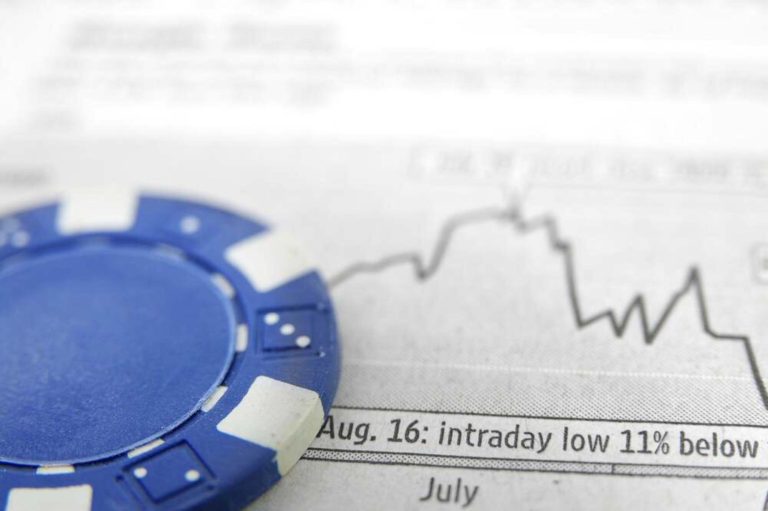
Intrinsic value is also used in options pricing to determine how in-the-money an option is or how much profit currently exists. For review, an options contract grants the buyer the right, but not the commitment, to buy or sell the underlying security at a preset price called the strike price. Options have expiration dates at which they can be exercised or converted to the shares of the underlying security. A call option allows an investor to buy assets such as a stock while a put option allows an investor to sell the asset. If the market price at expiration is above the strike price, the call option is profitable or in-the-money.
If the market price is below the strike of the put option, the put is profitable. If either option is not profitable at expiry, the options expire worthlessly, and the buyer loses the upfront fee or premium paid at the onset.
The intrinsic value of both call and put options is the difference between the underlying stock’s price and the strike price. In the case of both call and put options, if the calculated value is negative, the intrinsic value is zero. In other words, intrinsic value only measures the profit as determined by the difference between the option’s strike price and market price.
Option has no Intrinsic Value
However, other factors can determine the value of an option and its resulting premium. The extrinsic value takes into account other external factors that affect an option’s price, such as how much time is remaining until expiration or time value.
If an option has no intrinsic value meaning the strike price and the market price are equal, it might still have extrinsic value if there’s enough time left before expiration to make a profit. As a result, the amount of time value that an option has an impact on an option’s premium. Both intrinsic value and extrinsic value combine to make up the total value of an option’s price.
Pros
Intrinsic value helps determine the value of an asset, an investment, or a company.Intrinsic value provides the amount of profit that exists in an options contract.
Intrinsic value is a core concept of value investors seeking to uncover hidden investment opportunities. To calculate intrinsic value, you need to have a strong understanding of fundamental analysis. Investopedia’s Fundamental Analysis Course will show you how to calculate the true value of a stock and capitalize on undervalued opportunities. You’ll learn how to read financial statements, use ratios to determine value quickly, as well as learn other techniques used by professionals in over five hours of on-demand videos, exercises, and interactive content.
Cons
Calculating the intrinsic value of a company is subjective since it estimates risk and future cash flows. The intrinsic value of an option is incomplete since it doesn’t include the premium paid and time value.
It’s important to note the intrinsic value does not include the premium meaning it’s not the true profit of the trade since it doesn’t include the initial cost. Intrinsic value only shows how in-the-money an option is considering its strike price and the market price of the underlying asset.
Example of an Option’s Intrinsic Value
Let’s say a call option’s strike price is $15, and the underlying stock’s market price is $25 per share. The intrinsic value of the call option is $10 or the $25 stock price minus the $15 strike price. If the option premium paid at the onset of the trade were $2, the total profit would be $8 if the intrinsic value was $10 at expiry.
On the other hand, let’s say an investor purchases a put option with a strike price of $20 for a $5 premium when the underlying stock was trading at $16 per share. The intrinsic value of the put option would be calculated by taking the $20 strike price and subtracting the $16 stock price or $4 in-the-money. If the intrinsic value of the option were only worth $4 at expiry, combined with the premium paid of $5, the investor would have a loss despite the option being in-the-money.
KEY TAKEAWAYS
In financial analysis, intrinsic value is the calculation of an asset’s worth based on a financial model. Analysts often use fundamental and technical analysis to account for qualitative, quantitative and perceptual factors in their models. In options trading, intrinsic value is the difference between the current price of an asset and the strike price of the option.
